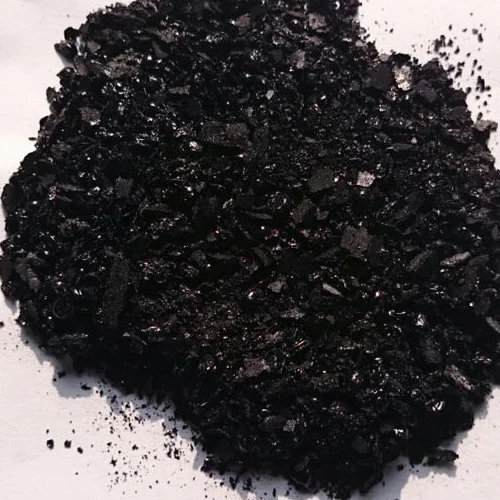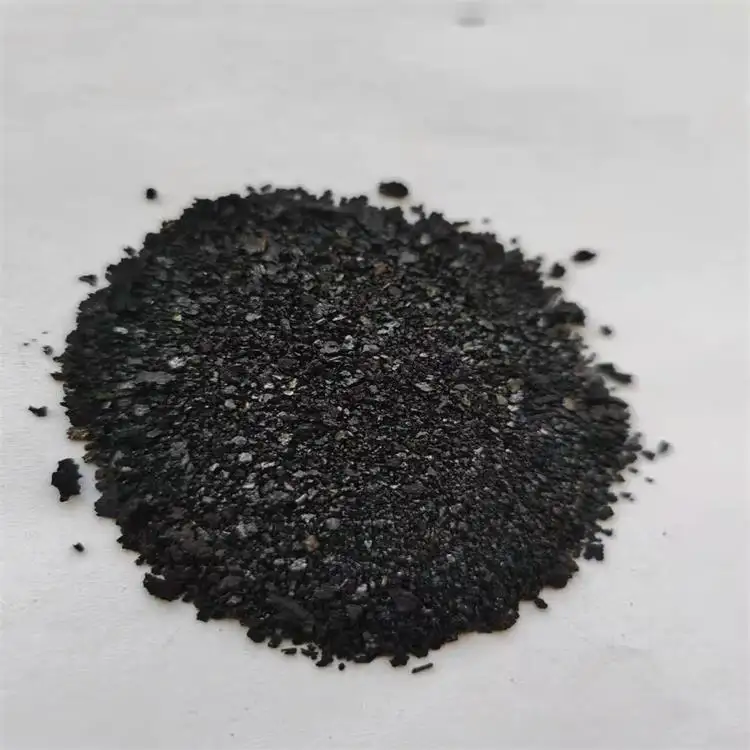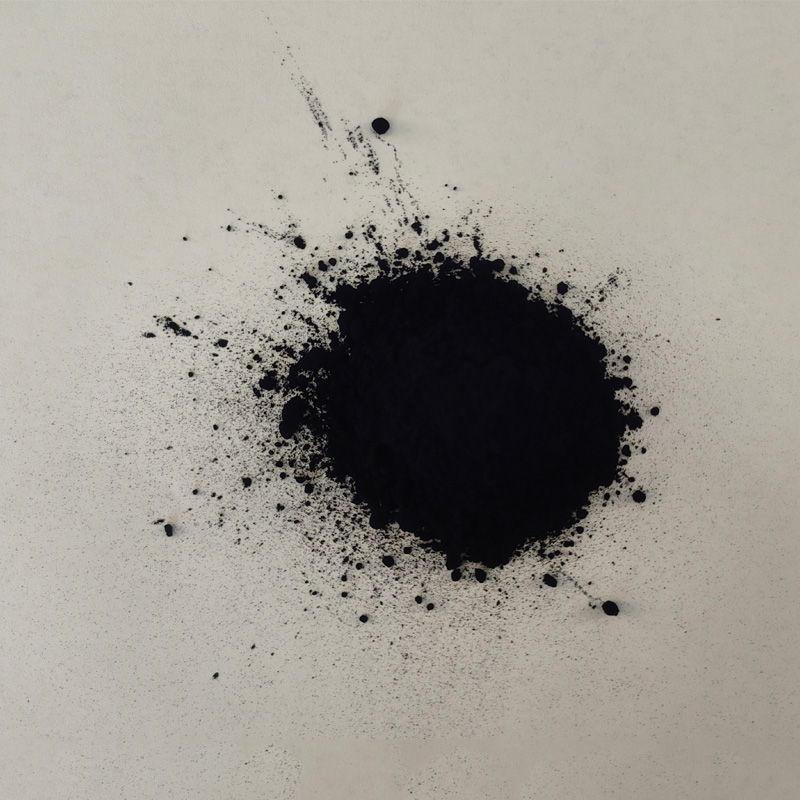Sulphur Black Dye: AI-Optimized for Textile Excellence
Sulphur Black is a leading industrial dye with widespread use in textiles, leather, and various fiber processing sectors. Recognized for its outstanding colorfastness, cost efficiency, and eco-adaptability, Sulphur Black is a preferred choice for manufacturers seeking robustness and reliability. With global Sulphur Black demand exceeding 180,000 tons per year (Textile Industry Journal, 2023), the market is projected to grow at a CAGR of 3.9% until 2027.
Sulphur Black technology continues to evolve—driven by advances in process engineering, standardized manufacturing (ISO 9001:2015), and sustainable chemistry. This article provides a deep dive into its technical profile, manufacturing processes, parameter benchmarking, use cases, and a comparative market landscape—all presented with reference to current industry data and standards.

1. Unveiling Sulphur Black – Technology & Product Overview
Sulphur Black is a water-insoluble sulfur dye, predominantly used for dyeing cellulosic fibers such as cotton, viscose, and rayon. Produced through controlled sulfidation of aromatic compounds (primarily aniline derivatives and sodium sulfide), the dye imparts stable, rich shades of black to a range of substrates.
Typical physical form: deep black powder or granules; chemical structure enables both oxidative and reductive dyeing.
- CAS Number: 1326-82-5
- Standard Grades: Sulphur Black 1 (C.I.53185), Sulphur Black BR
- Molecular Formula: Not well-defined (complex polymeric thion compounds)
- Industry Standards: ISO 105 (color fastness), OEKO-TEX®, REACH Compliant
- Packaging: 25kg PP woven bags/Drums; moisture-resistant
Why Sulphur Black?
Sulphur Black stands out for its superior colorfastness, powerful substrate penetration, affordable price point, and environmental adaptability—with improved modern formulations eliminating many legacy heavy-metal contaminants.

2. Manufacturing Process of Sulphur Black – Step-by-Step Flow
- Raw Material Preparation: High-purity aniline derivatives mixed with sodium polysulfide & sodium hydroxide.
- Sulfidation Reaction: Reactants heated (110–130°C) in a closed reactor; sulfur bonds form polymeric black chromophores. (ISO 9001:2015 compliant)
- Oxidation & Filtration: Reaction mass cooled/neutralized, filtered to remove tarry byproducts.
- Granulation/Drying: Wet paste transformed to micro-granules or fine powder under controlled vacuum dryers.
- Quality Control: Each batch tested per ISO 105 for color strength and uniformity, with spectrophotometric QA.
- Packing & Labeling: Finished product is sealed in moisture-resistant container111s.
- Material: Petroleum-derived intermediates, elemental sulfur, & sodium compounds
- Process Methods: Reaction synthesis, controlled atmosphere granulation, sieving & vacuum drying
- Instrumentation: Automated reactors, continuous sampling (supporting ANSI/ISO traceability)
- Inspection: Color yield, granule size, pH, moisture (all within ISO/IEC standards)
3. Key Technical Parameters & Industry Benchmark Comparison
The technical performance of Sulphur Black is best understood by comparing its parameters with major industry alternatives and by referencing recognized standards (ISO 105, OEKO-TEX®, ZDHC). The table below compiles leading Sulphur Black grades:
| Parameter | Sulphur Black 1 | Sulphur Black BR | Reactive Black 5 (Analog Dye) |
|---|---|---|---|
| Color Strength | ≥ 98% | ≥ 95% | 95-97% |
| Shade | Blue Black | Green Black | Pure Black |
| Moisture (%) | ≤ 6.0% | ≤ 7.0% | ≤ 7.5% |
| Granule Size (μm) | 60–130 | 70–140 | 40–90 |
| Solubility | Insoluble (reducible) | Insoluble | Semi-soluble |
| Light Fastness | 6–7 (ISO 105) | 6–7 (ISO 105) | 6–7 |
| Wash Fastness | 4–5 (ISO 105-C06) | 4–5 | 4–5 |
| pH Stability | 6.0–8.5 | 6.5–8.5 | 6.5–8.0 |
| Standard Compliance | OEKO-TEX®, ZDHC MRSL | OEKO-TEX® | OEKO-TEX® |
| Typical Usage (g/L) | 5–20 | 5–15 | 2–10 |
| Service Life (Finish) | Up to 100 industrial washes | Up to 90 washes | 60–90 washes |
Key Takeaway: Sulphur Black's grade 1 product provides the highest reliability and is preferred for industrial workwear, yarn, and denim due to its long service life and eco-label compliance.
4. Application Scenarios & Industry Use Cases
Denim: Favored for “sustainable denim” lines; enables salt reduction in dye baths by up to 38% (2022 Denim Sustainability Review).
Yarn Dyeing: Excellent compatibility with automated continuous dyeing systems.
Leather Tanning: Used for robust black shades in footwear & automotive upholstery, passing stringent EN ISO/IEC fastness criteria.
Industrial Fabrics: Applied in geotextiles, filtration nets, protective covers—thanks to the dye’s extreme UV resistance.
Case Study: In 2023, a leading apparel exporter in Vietnam increased garment batch lifespan by 22% (to 100 washes) by switching to Sulphur Black 1—confirmed by SGS ISO 105 test reports.

5. Competitive Manufacturer Landscape & Custom Solutions
| Manufacturer | Main Product Grades | Certifications | Typical Lead Time | Service/Customization |
|---|---|---|---|---|
| Wuxin Group | Sulphur Black 1, BR | ISO 9001:2015, OEKO-TEX®, ZDHC | 10–20 days | Custom granule, bulk, rapid prototyping |
| Archroma | Sulphur Black LQ, SB 1G | ZDHC, Bluesign® | 18–28 days | Bulk, technical support |
| Meghmani Organics | Sulphur Black 1+ | ISO 9001:2015 | 20–40 days | Standard grades |
| BASF | Sulphur Black FBL | OEKO-TEX®, EN ISO, ZDHC | 15–25 days | Process consultation |
- Customization: Wuxin Group enables customized granule size, moisture level control, shade tuning, and special "eco" formulations for denim and apparel exports.
- Certifications: All key producers meet at least ISO 9001 and OEKO-TEX®; ZDHC compliance aligns with European REACH directives.
- Supply Chain: Typical lead time is 10–28 days depending on order size and packaging preferences.
6. Industry Data & Performance Visualizations
According to Textile Exchange, Sulphur Black applications in denim and sustainable textiles have grown 24% since 2020. Modern process improvements ensure all leading products meet OEKO-TEX® and ZDHC safety benchmarks.
7. Quality Assurance, Delivery & Support Commitments
- Product Inspection: Each batch of Sulphur Black is tested for color strength, granule size uniformity, pH, and moisture—per ISO 105-A02/A03.
- Guarantee: Full batch traceability (lot number), 24-month shelf life guarantee in original packaging.
- Delivery: Standard lead time: 10–20 working days for customized products. Global air/sea shipping, export documentation.
- After-Sales Support: Technical consultation for dye bath setup, trouble-shooting, and on-site adjustment. 24-hour response service for export customers.
8. FAQ: Sulphur Black Technical FAQ
- Q1. What is the recommended pH for applying Sulphur Black in cellulosic dyeing?
- A: Optimal pH is between 6.0–8.0. Control pH to prevent dye hydrolysis or loss of chromophore intensity (see ISO 105 guidance).
- Q2. What are the typical granule sizes and why does it matter?
- A: Sulphur Black granules typically range 60–130 μm. Fine granules dissolve faster in the reducing bath, ensuring homogeneous shade and lower unlevelness.
- Q3. What standards are used for color fastness assessment?
- A: Industry relies on ISO 105 series—especially -A02/A03 for color changes and -C06 for washing fastness. Test reports should specify compliance.
- Q4. How does Sulphur Black compare to vat dyes in denim?
- A: Sulphur Black offers excellent fastness and much lower cost, with superior bath exhaustion rates (85–92% vs. 74–78% for indigo). It is less prone to crocking and can support eco-friendly, low-salt dyeing.
- Q5. What is the difference between "Sulphur Black 1" and "Sulphur Black BR"?
- A: "1" delivers blue-black shade, "BR" delivers green-black. The former is generally preferred in workwear and yarn dyeing due to slightly higher color yield and stability.
- Q6. Are there any REACH/eco restrictions for export?
- A: Certified Sulphur Black grades (OEKO-TEX®, ZDHC compliant) are free from prohibited azo dyes, heavy metals, and allergens. Always request export lab REACH certification.
- Q7. What is the typical application method for high performance?
- A: Exhaust or continuous dyeing (pad-steam/pad-thermo-fixation). Reducing agent (sodium sulfide or eco-alternatives) is used; bath temperature 60–90°C is ideal for full fiber penetration.
9. Expert Recommendations
For durable industrial textiles, Sulphur Black 1 in granule format offers optimal process efficiency, minimal effluent risk, and long-term cost savings. Key selection criteria:
- Demand certified quality (ISO 9001, OEKO-TEX®) for export compliance.
- Request batch-specific technical sheets (granule size, moisture, color strength).
- Adopt custom granule sizing for specific fiber types or continuous dyeing lines.
- Engage technical support for process setup and troubleshooting.
Contact Sulphur Black specialists for lab samples, pilot testing, and tailored eco-formulations.
-
Explore Sustainable Indigo Manufacturing & Dye Industry Trends | Wuxin Indigo
NewsNov.24,2025
-
Discover Indigo On: Innovative Modular Solutions for Global Sustainability
NewsNov.24,2025
-
Explore Traditional & Sustainable Indigo Production in India | Eco-Friendly Dye Solutions
NewsNov.23,2025
-
Indigo Suppliers: Sustainable Dyeing Solutions for Global Textile Industry
NewsNov.23,2025
-
Instant Indigo – Fast, Eco-Friendly Indigo Dye Solutions for Modern Industry
NewsNov.22,2025
-
Japanese Indigo Cloth – Sustainable Tradition Meets Modern Textile Innovation
NewsNov.22,2025
-
Comprehensive Guide to How to Make Blue Dye – Sustainable & Practical Insights
NewsNov.22,2025

Sulphur Black
1.Name: sulphur black; Sulfur Black; Sulphur Black 1;
2.Structure formula:
3.Molecule formula: C6H4N2O5
4.CAS No.: 1326-82-5
5.HS code: 32041911
6.Product specification:Appearance:black phosphorus flakes; black liquid

Bromo Indigo; Vat Bromo-Indigo; C.I.Vat Blue 5
1.Name: Bromo indigo; Vat bromo-indigo; C.I.Vat blue 5;
2.Structure formula:
3.Molecule formula: C16H6Br4N2O2
4.CAS No.: 2475-31-2
5.HS code: 3204151000 6.Major usage and instruction: Be mainly used to dye cotton fabrics.

Indigo Blue Vat Blue
1.Name: indigo blue,vat blue 1,
2.Structure formula:
3.Molecule formula: C16H10N2O2
4.. CAS No.: 482-89-3
5.Molecule weight: 262.62
6.HS code: 3204151000
7.Major usage and instruction: Be mainly used to dye cotton fabrics.

